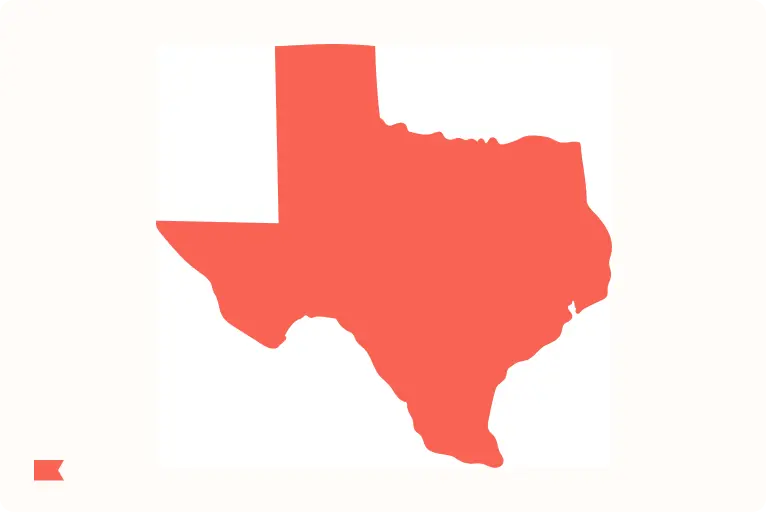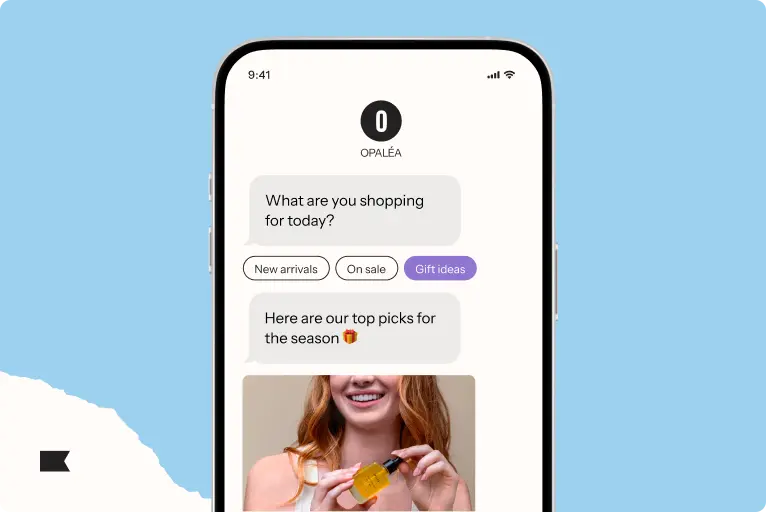The secret to overnight SMS success: treat your customers like friends for 10+ years first

Linksoul makes golf apparel for rule-breakers, in that they sell t-shirts.
“I’m in Atlanta and if I went into a golf course without a collared shirt on, I couldn’t play,” says Brandi Cantrell, ecommerce manager at Linksoul.
Founders John Ashworth and Geoff Cunningham started the brand in 2009 because the golf status quo bored them—and it shows. The DTC retailer sells graphic tees alongside hoodies, slacks, and polos with a twist (like a pineapple pattern).
Ashworth and Cunningham didn’t just want to rebel against exclusionary dress codes, though.
“They were sick of the golf world and how it was not this inviting place,” Cantrell explains. “They set out to make a brand that was all about making golf accessible.”
They set out to make a brand that was all about making golf accessible.
For more than a decade, they’ve built the opposite of a country club around their brand: an inclusive, engaged community of golfers.
Then, starting in 2019, they launched SMS to amplify the work they’d already done. It took off “instantly,” Cantrell says—and the momentum continues today.
In December 2022, Linksoul’s SMS click rate was 48% above the median for their peer group, according to Klaviyo benchmarks—which is especially impressive because SMS is already a high-engagement channel, with an average click-through rate roughly 8x that of email.
And Linksoul’s SMS revenue per recipient on campaigns in December 2022 was 7.2x the median for their peer group.
The brand exceeds SMS performance expectations so thoroughly, it’s almost like their audience views their texts as texts from a friend. And that makes sense: Linksoul has spent more than 10 years behaving like a friend toward its customers.
Here’s how.
- The brand hosts social events online and off
- It’s generous with long-time customers
- It’s down to text — and never in annoying way
Linksoul is a social hub
Friends invite you out—and Linksoul creates constant social opportunities for non-traditional golfers, both online and in-person in the company’s home base of Oceanside, California.
Investing in a public golf course
Starting in 2014, the Linksoul team helped protect and remodel a public golf course in Oceanside, near company headquarters: Goat Hill Park.
Ashworth spearheaded the effort to preserve it as green, public space where golfers could gather.
“It’s been a lot of work; I’m not going to lie,” Ashworth told Forbes of the remodel in 2017. “It’s an ongoing fight every day to make it better and make ends meet, but it’s very well worth it.”
Today, the park has no dress code, and it’s an all-ages venue, with a free 3-hole course for kids.
Inviting customers into their headquarters
Linksoul’s Oceanside headquarters isn’t just an office building. It’s a multi-purpose space with a retail store and a community event space: the Linksoul Lab.
Here, Linksoul invites local customers and neighbors to engage with the brand—and each other—in person. Since it opened in 2009, the Linksoul Lab has hosted an epic array of art shows, film screenings, and workshops—everything from a Masters viewing party to a crafting party.
The events happen at an incredible pace, too: The Linksoul lab has hosted thousands of art shows, Cantrell estimates.
Kickstarting fundraisers (plural!)
Linksoul has raised more than $600K for charity by donating the proceeds of limited-edition graphic tees.
Cunningham has designed tees to support causes like COVID prevention and, more recently, peace in Ukraine—an issue aligned with Linksoul’s motto, “Make par, not war.”
This COVID t-shirt design alone raised more than $250K, Cantrell reports:
Linksoul makes it easy for customers to support social causes, together—and it’s key to the brand’s appeal.
“If I can buy into a brand that cares so much about this mission, I’m much more likely to purchase from them and stay engaged with them,” Cantrell says.
If I can buy into a brand that cares so much about this mission, I’m much more likely to purchase from them and stay engaged with them.
Linksoul is generous with customers playing the long game
The Linksoul loyalty program has an impressive participation rate: 33% of Linksoul customers actively redeem rewards.
For the average loyalty program, that stat is 23%, according to a Smile.io analysis. Linksoul trounced that number with a few key touches.
Hooking users with innovative loyalty onboarding
Linksoul loyalty’s current onboarding flow, powered by Klaviyo and Yotpo, has a unique hook.
There’s no “Create an account to get started” CTA—instead, customers start earning rewards with their first purchase, and earn $5 in additional Linksoul cash when they open an account.
“We don’t make you have an account in order to earn,” Cantrell explains, but “you do have to have an account to redeem.”
This changes the loyalty sign-up ask to the hard-to-ignore “Create an account to redeem $5+ in Linksoul cash.”
We don’t make you have an account in order to earn. You do have to have an account to redeem.
Rewarding members generously
It’s not just worth joining Linksoul’s rewards program—it’s worth sticking with it. Members earn $1 in rewards for every $20 spent, the equivalent of a flat 5% discount on everything.
They also get annual gifts, and unlock extra perks the more they spend. Customers that have spent more than $600 with Linksoul since 2020 for example, get free 2-day shipping on all their orders.
Incentivizing more than spending
Customers don’t have to spend money to earn rewards—a set-up that can feel transactional. Linksoul’s loyalty program also rewards members for engaging and spreading the word via social follows, product reviews, and referrals.
Linksoul is down to text
Linksoul launched SMS marketing in 2019. Compared to other companies, they were early adopters.
From their customers’ perspective, they launched right on time. Linksoul offered early SMS subscribers 15% off, and within a few weeks of launch, they had more than 20K subscribers—most of them returning customers.
Linksoul’s list has grown at a steady clip since then, too.
Quite simply, the team created reasons for subscribers to want ongoing texts from their brand. Via SMS, customers could get:
- Invites to golf and arts events
- Personalized rewards and perks alerts
- Early access to sales and launches
Cantrell has followed a few core principles to keep Linksoul’s audience growing and engaged:
Sending valuable texts
This sounds like code for discounts, but it’s not. When Cantrell thinks about valuable SMS messages, she thinks about a few things:
- Timelines: Why now? The answer could be a limited-time discount, but it could also be a seasonal campaign, or a limited-edition windbreaker made out of recycled coconuts. (Linksoul has a whole recycled coconut collection!).
- Relevance: Why this recipient? Cantrell segments her SMS list based on purchase history and site activity, and sends only to users with a demonstrated interest in the topic—whether that’s eco-friendly products, outerwear, or women’s clothes.
- Device: Why this channel? For subscribers opted into email and SMS, Cantrell likes to send messages—especially abandoned cart reminders—to the device they’re actively shopping on. To do this more effectively, Linksoul switched from Attentive to Klaviyo SMS.
Ultimately, Cantrell’s philosophy is simple: “My goal for email, text, everything we do, is just to give people what they want.”
My goal for email, text, everything we do, is just to give people what they want.
Minimizing unsubscribes
Cantrell doesn’t just maximize Linksoul’s revenue from SMS marketing. She’s also minimizing unsubscribes.
For Cantrell, it’s personal: “I get offended,” she laughs. “Don’t unsubscribe from my stuff! I put a lot of effort into it.”
At first, she thought minimizing unsubscribes meant sending as few texts as possible. Through testing, though, she discovered sending customers more texts drove fewer unsubscribes.
Now, she sends at least one SMS campaign a week—and in Q4 2022, Linksoul’s SMS campaign unsubscribe rate was 27% below median for their peer group.
Merging SMS and rewards
Linksoul’s most successful SMS subscription offer wasn’t actually their launch offer. It came later, when they integrated their VIP rewards program into SMS: “Swap digits with us,” Cantrell recalls, “and we’ll give you $20 in Linksoul cash.”
It drove their highest-ever SMS subscription count in a single day.
The two channels continue to support each other:
- How rewards boost SMS: Customers who haven’t subscribed to SMS but actively redeem rewards see a pop-up on the site, offering them $20 in Linksoul cash to sign up for SMS.
- How SMS boosts rewards: SMS subscribers who have earned rewards but haven’t created an account yet get text reminders to create an account to redeem.
The rewards program casts a halo of generosity positivity around SMS, and SMS makes it easier to engage (and re-engage) rewards customers.
An SMS list is a community, if you make it one
Most people’s texts come from their friends—so much so that most consumers subscribe to SMS updates from just 2-3 brands.
It may look like Linksoul achieved SMS success overnight. But in reality, the brand treated customers like friends for a decade before launching the channel.
Instead of maximizing revenue and margins, Linksoul invested in long-term, multi-faceted relationships with customers. The team rewarded them generously for repeat purchases, but also invited them into Linksoul headquarters, and didn’t spam their phones once they signed up for texts.
It took years of consistent branding activity to see immediate SMS results.
In business terms: “Linksoul is 100% brand before sales,” Cantrell says.
Linksoul is 100% brand before sales.

Related content

Looking for the best SMS marketing tools? See the top 3 platforms for 2026 and learn how to choose the right one for segmentation, automation, and two-way messaging

Marketers are right to be cautious right now. The Texas settlement has sparked more questions than clarity—but that’s exactly why taking a compliance-first approach still matters.

Google’s RCS Roadshow and Klaviyo are shaping the future of mobile marketing with AI-powered personalization and trusted, interactive messaging.
